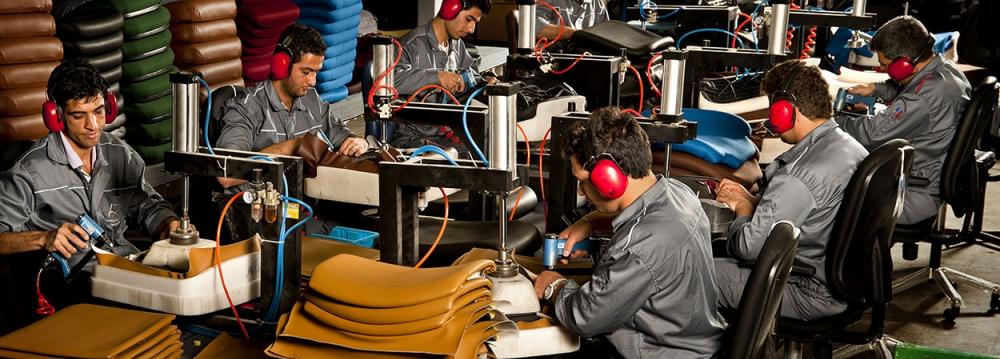Iran Chamber of Guilds announced earlier this month that more than 200,000 small- and medium-sized enterprises were founded in the country during the Iranian year that ended March 20, 2017, indicating the capacity of SMEs in generating jobs.
According to ICG President Ali Fazeli, SMEs account for around 25% of all the job opportunities in Iran.
SMEs generate 17.5% of Iran’s gross domestic product. More than 3 million such enterprises are active across the country in the fields of production, supply, services and technical services.
Amid hopes that new SMEs help the economy by increasing production and creating new jobs, there are reservations about the viability of these newly-founded units with regard to underwhelming demand and overcapacity.
Hamid Sabetqadam, the head of Eyewear Makers and Sellers Union, is sanguine about the establishment of new SMEs.
“In our field of activity, domestic demand is on the growth path and if production goes well, we can meet this demand … Better days will come if the government grants its support to the private sector,” he was quoted as saying by SMT Daily.
Abolqasem Agha-Hossein Shirazi, the head of Apparel Producers and Sellers Union, is of the same opinion, saying there is no doubt new production units can create jobs.
“Yet, at present, our economy is in the doldrums and there is slump on the demand side. When a new production unit is set up, demand for its products needs to be spurred as well,” he said.
Shirazi noted that the media can play an important role by encouraging people to purchase locally produced goods instead of imported products so that domestic production can rise and recession ends.
Nonetheless, economist and faculty member at Tehran University, Ali Akbar Nikou-Eqbal, is of a different opinion.
He says stimulating demand and increasing liquidity may not be the best ways to overcome recession since these two measures themselves lead to higher inflation rather than a buoyant market.
According to the economist, Iran can step out of recession by increasing productivity.
“Out of the many production units active in industrial parks across the country, half works at 30% to 70% of their capacity and the rest are idling at 20% to 30% capacity,” he said.
“In a country where only a few industrial fields related to oil, gas and petrochemicals are well-known and active, setting up 200,000 production units using bank facilities and the government’s financial support only adds insult to injury.”
Nikou-Eqbal believes that the capital invested in founding new SMEs should be spent on renovation of units running under capacity or on completing incomplete projects.
“Establishing production units in Iran will pay off on condition that new industries are defined or imported into the country. Only then can we hope for the market to thrive,” he said.
The Iranian government granted more than $4 billion to small- and medium-sized enterprises last year in loans to stimulate the industrial sector, which has been grappling with deep recession in the past few years.
Most of the loans were given to SMEs in Mazandaran Province (987 businesses), Isfahan Province (965 businesses) and Gilan Province (768 businesses).
By definition, enterprises run by under 50 workers and under 100 workers are considered small- and medium-sized respectively, according to Iran’s Small Industries and Industrial Parks Organization.


